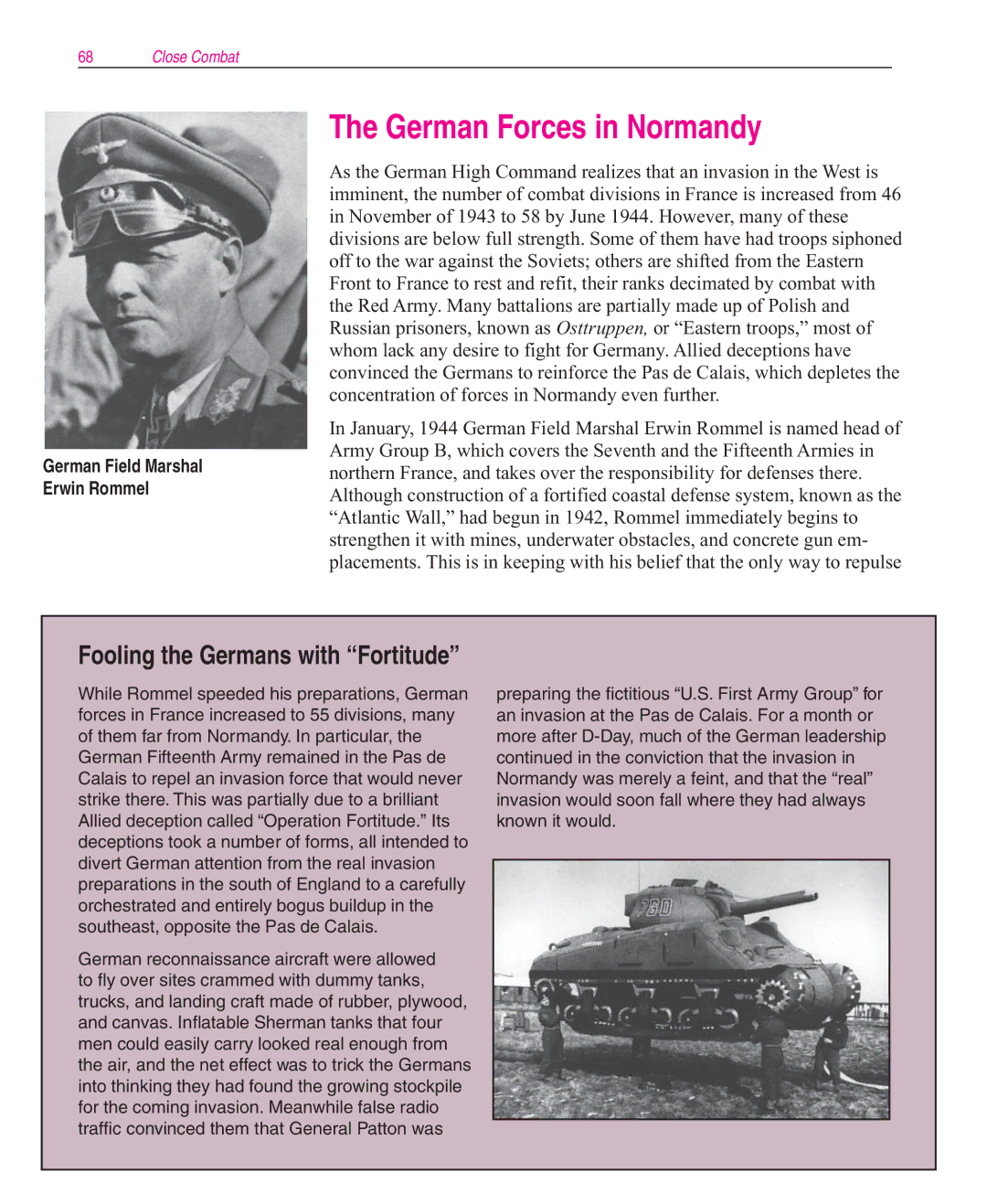
68Close Combat
German Field Marshal Erwin Rommel
The German Forces in Normandy
As the German High Command realizes that an invasion in the West is imminent, the number of combat divisions in France is increased from 46 in November of 1943 to 58 by June 1944. However, many of these divisions are below full strength. Some of them have had troops siphoned off to the war against the Soviets; others are shifted from the Eastern Front to France to rest and refit, their ranks decimated by combat with the Red Army. Many battalions are partially made up of Polish and Russian prisoners, known as Osttruppen, or “Eastern troops,” most of whom lack any desire to fight for Germany. Allied deceptions have convinced the Germans to reinforce the Pas de Calais, which depletes the concentration of forces in Normandy even further.
In January, 1944 German Field Marshal Erwin Rommel is named head of Army Group B, which covers the Seventh and the Fifteenth Armies in northern France, and takes over the responsibility for defenses there. Although construction of a fortified coastal defense system, known as the “Atlantic Wall,” had begun in 1942, Rommel immediately begins to strengthen it with mines, underwater obstacles, and concrete gun em- placements. This is in keeping with his belief that the only way to repulse
Fooling the Germans with “Fortitude”
While Rommel speeded his preparations, German forces in France increased to 55 divisions, many of them far from Normandy. In particular, the German Fifteenth Army remained in the Pas de Calais to repel an invasion force that would never strike there. This was partially due to a brilliant Allied deception called “Operation Fortitude.” Its deceptions took a number of forms, all intended to divert German attention from the real invasion preparations in the south of England to a carefully orchestrated and entirely bogus buildup in the southeast, opposite the Pas de Calais.
German reconnaissance aircraft were allowed to fly over sites crammed with dummy tanks, trucks, and landing craft made of rubber, plywood, and canvas. Inflatable Sherman tanks that four men could easily carry looked real enough from the air, and the net effect was to trick the Germans into thinking they had found the growing stockpile for the coming invasion. Meanwhile false radio traffic convinced them that General Patton was
preparing the fictitious “U.S. First Army Group” for an invasion at the Pas de Calais. For a month or more after
